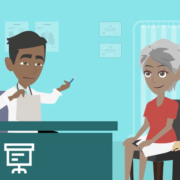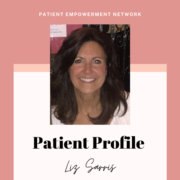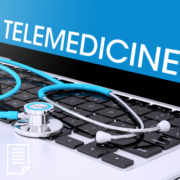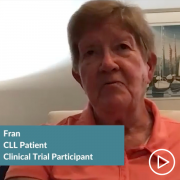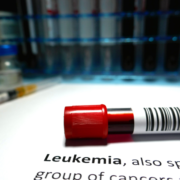How to Make Confident and Informed CLL Treatment Decisions
How to Make Confident and Informed CLL Treatment Decisions from Patient Empowerment Network on Vimeo.
How can you engage effectively in your CLL care? Collaborating with your doctor and playing an active role in your care can lead to improved outcomes. This animated video reviews essential steps and important considerations for making informed and confident CLL treatment decisions.
Related Resources:

|

|

|
Transcript:
Elena:
Hi, I’m Elena and this is my husband, Bill.
Elena:
Several years ago, I was diagnosed with CLL, which stands for chronic lymphocytic leukemia. CLL is a blood cancer that starts in the bone marrow. It’s the most common type of adult leukemia.
When I was first diagnosed, I wasn’t treated right away. It was confusing at the time, but my CLL doctor, Dr. Singh, told me that most people with CLL don’t need to be treated immediately.
Here’s Dr. Singh, he can explain it further.
Dr. Singh:
Hi! I’m Dr. Singh, and I’m a hematologist specializing in the care and treatment of people with CLL.
At first, we approached Elena’s CLL with “watch and wait” or active surveillance. Through physical exams, blood work and frequent communication, we monitored how her CLL was progressing over time.
Elena:
I was in watch and wait for about a year—then, I begin to have symptoms that interfered with my daily life. I had drenching night sweats and I felt so exhausted.
Dr. Singh:
Right! An increase in symptoms is often an indicator that it’s time to treat a patient’s CLL. Elena’s fatigue and night sweats are common symptoms. Other symptoms can include enlarged lymph nodes or spleen, fever, unintentional weight loss and frequent infections.
In addition to an increase in symptoms, signs that it might be time to treat can include anemia or low platelet counts.
Elena:
So, once Dr. Singh let me know it was time to treat my CLL, he walked me and Bill through the goals of treatment.
And by that, I mean we discussed balancing my lifestyle with finding an effective treatment for my CLL.
Dr. Singh:
Elena let me know that she’s very social and enjoys riding her bike – we wanted to make sure she could continue doing the activities she loves.
The clinical goals of CLL treatment are to slow, stop or eradicate the cancer. I spoke with Elena and Bill about finding an approach that may get her CLL under control while preserving her quality of life.
Elena also had essential testing, including biomarker testing, which we took into consideration along with her treatment goals. We reviewed each potential approach to make sure we found the best, most personalized treatment option for HER CLL.
We discussed the effectiveness of the treatment option, and the likelihood of a recurrence a. And we reviewed what our next steps would be if the treatment plan needed to be adjusted.
Bill:
And I wanted to make sure Elena was able to continue feeling her best, so I asked about potential side effects for each therapy and how it could impact our lifestyle.
Dr. Singh:
Exactly! We discussed how each treatment option could affect Bill and Elena’s daily life. You and your doctor may also consider:
- The financial impact of a treatment plan
- Your age and overall health
- The stage of your disease at the time of treatment
- And Biomarker test results
Elena:
In addition to asking questions, Bill took notes during our appointments, since it was often hard for me to absorb everything at once.
Bill:
We also made sure to talk about the appointment on our way home, while the information was fresh on our minds. And we did our part by researching CLL and bringing a list of questions to each appointment.
I found an office visit planner on the Patient Empowerment Network website that helped me organize my health info and questions.
Dr. Singh:
As you can see, Bill and Elena were actively engaged in each care decision. It’s vital that patients feel empowered to speak up. If you can, bring a friend or loved one along to your appointment.
And, if you are able, it’s a good idea to seek a second opinion or a consultation with a CLL specialist to help you feel confident in your care decisions.
Elena:
Dr. Singh made Bill and I feel included in the decision-making process, as if it were a collaboration.
Dr. Singh:
That’s right. This is a partnership. So, what steps can you take to be more engaged in your CLL care?
- Understand and articulate the goals of your CLL treatment plan.
- Learn about your options and weigh the pros and cons of each approach.
- Bring a friend or loved one to your appointments.
- Ask about essential testing and how it may impact your treatment options.
- Consider a second opinion or a consult with a CLL specialist.
Bill:
That’s great advice, Dr. Singh. To learn more, visit powerfulpatients.org/CLL to access a library of tools.
Elena:
Thanks for joining us.

